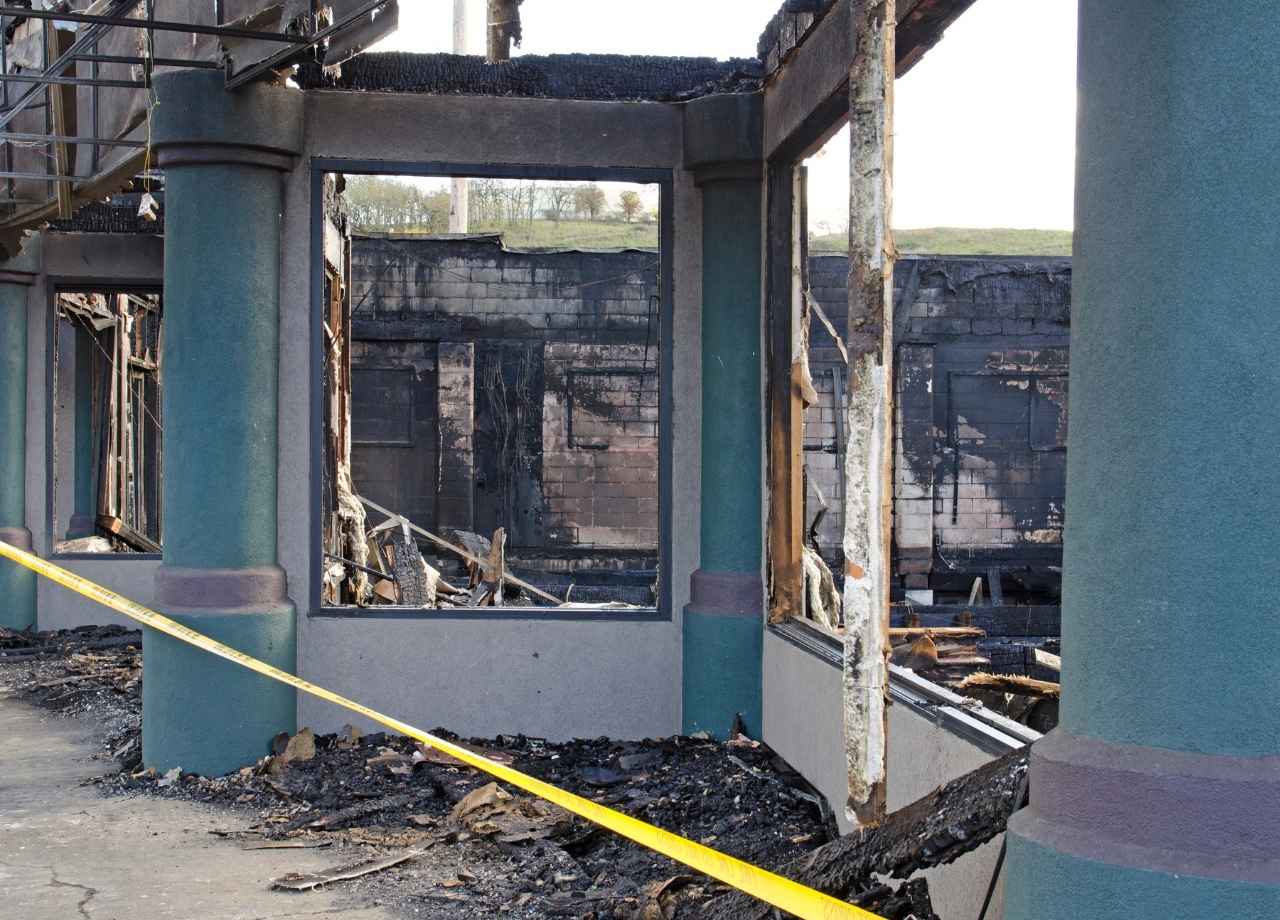When a home or business is hit with a sudden disaster—fire, flood, storm damage, or a burst pipe—the first question most property owners ask is, “How soon can restoration begin?” In those stressful first hours, time matters more than almost anything else. Water saturates walls and floors in minutes, mold spores can start activating within a day, and smoke damage can permanently stain and corrode materials if not addressed quickly.
This urgency is exactly why professional emergency restoration companies structure their services around rapid response. At First Coast Contracting, for example, our crews are available 24/7 to respond as soon as a call comes in. But how fast the actual restoration work can begin depends on several key factors. Understanding these variables can help homeowners and business owners know what to expect in the first critical hours and days.
Table of Contents
What “Emergency Response” Really Means
Emergency restoration is not a one-size-fits-all process. The phrase “emergency response” covers a spectrum of actions that start with stabilizing the property and progress into full cleanup and repair. The first phase is about preventing additional damage, not completing the entire job in a single visit.
When a call comes in, dispatch teams typically aim to be on-site within a few hours. Industry standards often target a two-hour window in metropolitan areas, though in rural locations it may take longer. The arrival of a crew marks the beginning of emergency services, but the actual start of restoration work depends on safety conditions, access, and the type of damage involved.
Factors That Influence How Quickly Work Begins
Several real-world considerations determine how fast restoration can officially start.
1. Safety of the Site
The first priority is whether the site is safe to enter. Fire-damaged structures may have unstable walls or roofs. Flooded areas could conceal electrical hazards. Before crews can begin restoration, utilities may need to be shut off, structural assessments performed, or hazardous materials cleared. Safety assessments usually take place immediately upon arrival, and in most cases, basic stabilization—like turning off water or securing power—can be done within the first visit.
2. Type of Disaster
Different types of damage require different first-response actions:
- Water damage: Crews can begin water extraction almost immediately, using pumps and vacuums to remove standing water. Drying equipment often goes in the same day.
- Fire damage: Debris removal and board-up work typically come first, followed by smoke and soot cleanup. The process may take longer to initiate if the structure requires clearance from fire officials.
- Storm damage: Emergency tarping or temporary roofing can usually be started right away to prevent further rain intrusion.
- Mold remediation: Work may begin quickly, but full containment setups are required before any demolition or cleaning can proceed.
Each disaster type has its own pace, but in all cases, stabilization begins almost as soon as the crew arrives.

3. Access and Permissions
If the property is part of a larger building—like a condo or commercial complex—restoration work may require approval from building management, insurance representatives, or even city officials. Fire departments may restrict access until an investigation is complete. These permissions can sometimes delay the hands-on work, though initial mitigation (like boarding up broken windows) is often allowed sooner.
4. Insurance Communication
Insurance carriers often prefer to be notified before significant restoration work begins. While reputable restoration companies know how to document every step for claims, some carriers may want an adjuster on-site first. That said, most insurance companies also understand the urgency of mitigation and rarely object to immediate steps like water removal or securing the property.
The Timeline of a Typical Emergency Restoration Response
To give a clearer picture, here’s a step-by-step look at how emergency response usually unfolds:
The First Hour
- Initial call to the restoration company
- Information gathered about the damage type, size, and location
- Dispatch team mobilized and on the way
The First Few Hours
- Crew arrives at the site
- Safety assessment performed
- Utilities shut off if necessary
- Emergency mitigation starts: water pumped out, windows boarded, roof tarped, or fire debris cleared
- Documentation begins with photos, notes, and moisture readings
The First 24 Hours
- Drying equipment set up in water loss cases
- Air scrubbers and containment barriers installed in fire or mold scenarios
- Damaged materials identified for removal
- Insurance contact established and claim documentation shared
The First Week
- Demolition of unsalvageable materials
- Deep cleaning and odor removal
- Structural drying continues with daily monitoring
- Repair planning begins, including estimates for rebuilds or remodeling
Why Immediate Mitigation is Different from Full Restoration
It’s important for property owners to understand that “restoration beginning” doesn’t mean the entire home will be put back together in a day. The emergency phase focuses on mitigation—stopping the damage from spreading. Without it, losses compound quickly.
For instance, a burst pipe may leave standing water in a kitchen. If crews arrive within hours, they can extract the water, remove soaked baseboards, and set up drying equipment. That prevents mold from developing and protects cabinetry. Full restoration—replacing drywall, flooring, and paint—comes later, after drying is complete and insurance approvals are in place.
This two-phase process can feel drawn out to property owners under stress, but it’s the only way to ensure both safety and quality. Immediate mitigation is rapid by necessity; full restoration requires planning, permits, and skilled craftsmanship.
The Role of Technology in Speeding Up Restoration
Modern restoration work benefits from advances in both equipment and communication. High-capacity extraction pumps and desiccant dehumidifiers can dry spaces faster than older equipment. Thermal imaging cameras allow crews to detect hidden water pockets within walls immediately, preventing secondary damage.
On the communication side, many restoration companies now use cloud-based reporting systems. This means moisture readings, photos, and job progress are uploaded in real time, making it easier for insurance adjusters to approve next steps without waiting for physical reports. Faster approvals often equal faster repairs.
How Homeowners Can Help Speed Things Up
Property owners play a role in how quickly restoration can start. A few steps can make the process smoother:

- Call a professional as soon as possible—don’t wait until morning.
- Shut off water, gas, or electricity if it’s safe to do so before crews arrive.
- Provide access to the property and necessary keys or codes.
- Notify your insurance carrier immediately and let them know a restoration company is on-site.
- Avoid trying to clean or remove items yourself, as this can interfere with insurance claims or create safety hazards.
These actions can shave valuable time off the initial response.
Common Misconceptions About Emergency Restoration Speed
Property owners often have unrealistic expectations about restoration speed, largely due to television shows or oversimplified online articles. Some common misconceptions include:
“Restoration companies can rebuild everything within days.” In reality, mitigation is fast, but rebuilding may take weeks depending on materials and permits.
“Insurance companies slow everything down.” While there can be delays, proper documentation and communication often keep the process moving smoothly.
“Mold doesn’t start right away.” In humid climates, mold growth can begin in as little as 24–48 hours. Immediate drying is crucial.
“DIY cleanup is just as effective.” Without commercial-grade equipment and training, DIY efforts rarely achieve the same results and can sometimes make things worse.
The Bottom Line: Restoration Starts Sooner Than Most People Think
The truth is that emergency restoration usually begins within hours of a call. Mitigation efforts—water removal, board-ups, tarping, containment—are designed to start immediately. Full-scale repairs and remodeling follow once the property is stabilized and insurance coordination is complete.
The speed at which restoration begins depends on safety, type of disaster, access, and insurance requirements. But one constant remains: the faster you make the call, the faster trained crews can protect your property from further damage.


